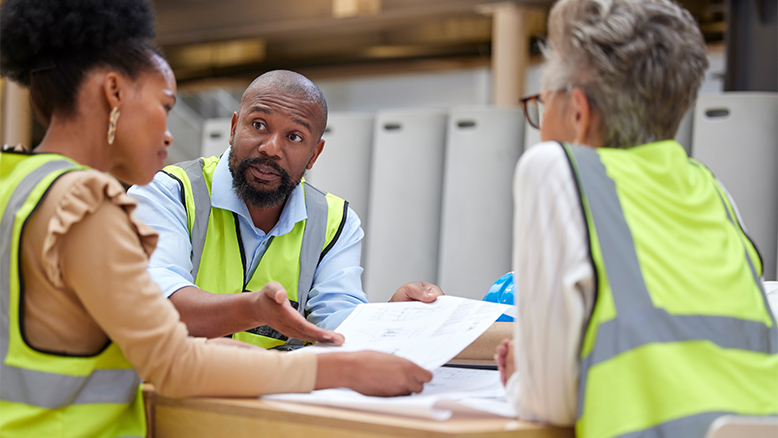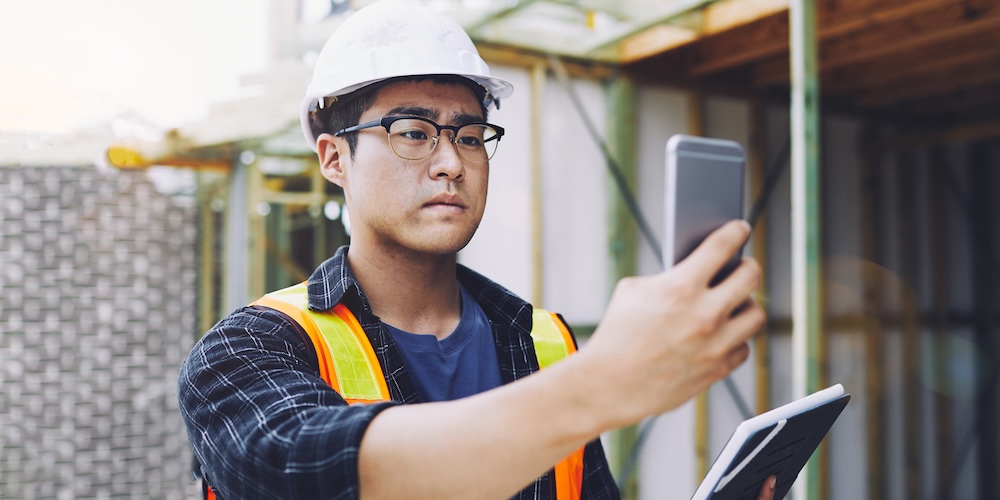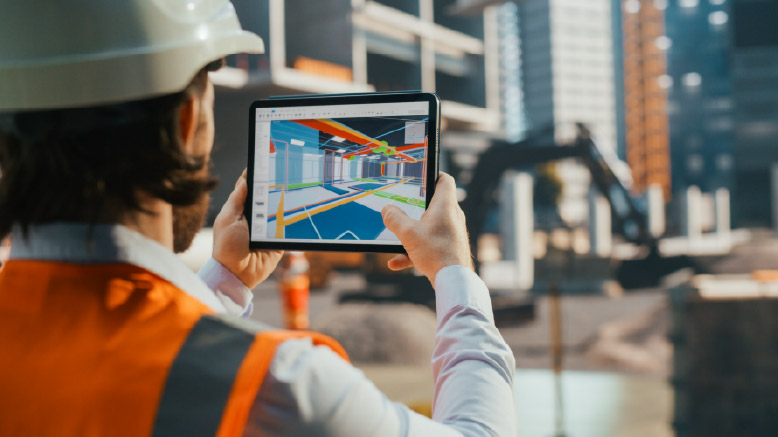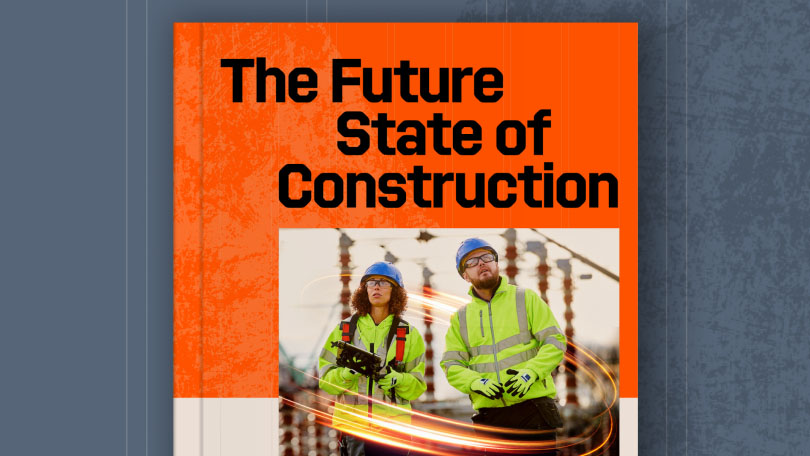— 6 min read
Smart Design: Using Operational Data to Drive Better Decisions
Last Updated Sep 26, 2025
Nicholas Dunbar
Content Manager
62 articles
Nick Dunbar oversees the creation and management of UK and Ireland educational content at Procore. Previously, he worked as a sustainability writer at the Building Research Establishment and served as a sustainability consultant within the built environment sector. Nick holds degrees in industrial sustainability and environmental sciences and lives in Camden, London.
Last Updated Sep 26, 2025

Every aspect of construction, from pre-construction all the way to facilities management, can be improved by capturing and analysing data more effectively. Real-time operational data, or near-real-time information about the live status of a project or building, can be used to make smarter decisions and build out the necessary evidence for compliance initiatives.
As more regulations come into effect that require stringent documentation to prove compliance, operational data is becoming even more important. The Building Regulations 2010, net zero targets and the Building Safety Act 2022 each require thorough documentation to satisfy their requirements, partly evidenced by operational data.
Methodologies such as ‘TM54 Evaluating operational energy use at the design stage’ are helping construction companies and their clients to bridge the performance gap between predicted and actual energy use, which is critical for evidencing against net-zero targets and certifications such as BREEAM. The challenge is understanding how to predict and measure the performance, which begins at the design stage.
Table of contents
How Smart Design Supports Better Operational Data Initiatives and Facilities Management
The construction industry has a vast opportunity to make better use of technology and data to simplify compliance and meet efficiency goals. For the best results, this needs to be implemented from the very beginning, with data capture methods devised at the design stage. Planning and designing the inclusion and use of sensors to monitor an asset is a particularly compelling example of smart design.
Sensors allow facilities managers, who become responsible for compliance after the handover of a construction asset, to monitor and evidence the operational status of a building. They can track all kinds of data, including:
- Energy consumption
- Occupancy
- Environmental conditions
- Downtime
Tracking this data not only helps teams to gather and document the necessary information for regulations and standards, but also to improve the return on investment (ROI) of individual components within an asset.
Downtime is a particularly useful metric. Everybody understands the value of having visibility into energy usage and identifying the costs associated with lighting and heating. But downtime is a lesser discussed metric relating to the cost efficiency of a building. Without tracking an asset’s downtime and comparing it against maintenance time or the number of tickets raised, it is more likely that the asset will be overlooked to the point of failure, which can lead to a significant expense to replace it or carry out major repairs.
If you look at metrics such as downtime, maintenance time, and tickets raised, you’ll identify that an asset is becoming less efficient. From here, you can start to manage your predictive maintenance much more proactively. It might not seem like a massive commercial gain but think about how much it would cost to replace an entire heating system, or temporarily lose the use of a building because it can’t be heated.
Vicki Reynolds
Technical Director - Digital Estates
One Creative Environments
The less you understand about your building, the less efficiently you can manage it. That’s where the value of sensors, data analysis and visualisation tools make a big difference. A facilities manager will be better informed if they can see the history of a building, with all the maintenance and operational data, and understand the trends and risks that the data portrays.
To digital twin or not to digital twin?
A digital twin is a bi-directional connection between physical and virtual environments that incorporates real-time data from a physical asset into a virtual environment for monitoring and predictive analysis, the results of which can then, in turn, influence the operation of the physical asset.
They are useful tools for gaining an understanding of the status of an asset, but they can often be created without genuine consideration for their use-case and longevity. The most useful digital twins are created when a team has a clear intention and solution in mind before its development. Identifying pain points, whether that’s an inability to hit sustainability targets or a lack of clarity about occupancy, helps you to get the best out of a digital twin project, as there is a clear challenge to solve.
We have clients that come to us and say: “We want a digital twin.” But when we ask why, they say: “Well, we don’t really know yet.” This just isn’t useful. A digital twin should almost be a happy accident — you’ve got a problem, you solve the problem and, in that process, you’ve created a digital twin.
Vicki Reynolds
Technical Director - Digital Estates
One Creative Environments
Digital twins are at their best when they are built for a very specific solution but can be easily repurposed for another. This means that when other problems arise, or you get additional opportunities to pull in more data, you can keep building and growing them. But don’t do it all right at the beginning — don’t ‘eat the elephant whole’. You can start small and specific and keep developing it from there.
Energy efficiency and cost reduction are both made easier with a digital twin that pulls in data from sensors or an existing BMS. You can create heat map solutions, paired with smart sensors that discover where the building is least efficient in terms of both energy consumption and costs. From there, you can introduce systems that automate and regulate the building, as well as identifying the assets you may need to replace to get the highest return on investment.
An interesting example of how sensors and digital twins can help manage building more efficiently can be found in university classrooms.
Students were signing in their classmates with RFID chips, or signing in then leaving after five minutes, which meant lectures for 100 people often only saw 10 or 15 students attend. Comparing the sign-in data to anonymised occupancy sensor data showed they could book much smaller rooms, which led to savings by closing off those bigger spaces, and not heating or lighting them, when they weren’t actually needed.
Vicki Reynolds
Technical Director - Digital Estates
One Creative Environments
Debunking Sensor Myths
Sensors don’t have to be expensive, in fact they can be very cheap these days. And pulling sensor data into a dashboard can be a low-cost exercise which could be completed as a small R&D exercise.
When you’re starting to pull information in, that’s when you can start to find the value and expand it out into solving lots of problems. The data that sensors help you capture, and the data-driven decisions you can make with that information, are their own proof of return on investment.
There’s a lot of misinformation out there that digital twins must be big, bold, and expensive, but that’s not the case. There can be pressure to think that you need to innovate to stay relevant, but innovation should be about solving problems in smarter, more efficient ways. Sensors and digital twins can be part of that solution, which results in genuinely useful innovation. Start with the problem, not the desire to innovate, and you’ll get the most meaningful results.
Categories:
Written by
Reviewed by
Nicholas Dunbar
Content Manager | Procore
62 articles
Nick Dunbar oversees the creation and management of UK and Ireland educational content at Procore. Previously, he worked as a sustainability writer at the Building Research Establishment and served as a sustainability consultant within the built environment sector. Nick holds degrees in industrial sustainability and environmental sciences and lives in Camden, London.
View profileExplore more helpful resources

Control the Chaos: Standardising Document Workflows in Construction Projects
Document control and implementation play a central role in managing risk, meeting deadlines, and delivering projects to spec. As builds become more complex and teams increasingly disperse, the volume and...

Cost-Plus Construction Contracts in the UK
A construction cost-plus contract – sometimes called a cost-reimbursable or prime cost contract – reimburses all project costs and adds a fee to cover the contractor’s overhead and profit. UK...

Digital Construction Technology for Whole-Life Value
For decades, the construction industry has kept a narrow focus on capital cost — the one-time, upfront costs of a construction project. While in the short term this seems like...

UK Construction Progress Reports: Tools for Smarter Site Management
Construction progress reports track completed work, on site issues, costs, and safety so UK project teams can demonstrate progress, secure payments, and stay on programme. Accurate progress data is essential...
